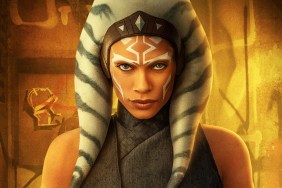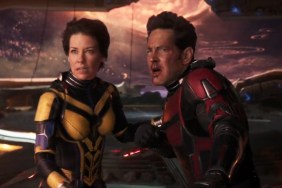The Watch Dogs Legion NPC system is quite ambitious. Playing as any one character almost seems like a pipe dream, which makes it a little hard to wrap your head around. Luckily, we sat down with Joel Burgess, the world director on the game, in order to get an understanding on the Watch Dogs Legion NPC system, how it ticks, and how nonlethal play factors in.
GameRevolution: The NPC system seems hard to create. Why try and make it?
Joel Burgess: There are a couple of reasons. One reason is that it is a super interesting tech challenge. We have a lot of people who are really experts in certain types of software design whether it’s like our narrative designers that come from an interactive fiction background and proc-gen stuff there. We have AI programmers and long-time game dev AI programmers. So we have a bunch of people who are specialists in various aspects of this system. And we had this chance with them to go really deep on that aspect and do something more interesting there. So this is just a sort of game dev nerd reason to do it. Because we can.
In terms of gameplay and thematics, we think it’s a natural progression. Like in the first game, we had Aiden being this lone wolf out on his own that doesn’t trust anybody. In Watch Dogs 2, we had the San Francisco cell where they are working together and they’re a little bit more progressive in their outlook and more hopeful. For us, it’s sort of a natural for us to go from that one to that bunch to anyone. But then that’s also sort of the world that we’ve created.
This is unlike the first two games because they were contemporaneous. They happen now. The day the game comes out is the day the game takes place. Legion is not that way. It is speculative fiction so it isn’t trying to be the London that we know. It’s trying to be that London some years in the future that is really effected by what is happening in the world. And the big theme that we come back to is that notion of division.
Like we are very divided in our society today and as things go a certain direction, we have these opportunists that come up and drive deeper and deeper wedges to separate people. We have this authoritarian regime that comes up in the city and that kind of idea where you don’t just have one hero that’s gonna save us all and is able to do everything and is perfect at everything they try. That idea resonates well with that core theme so that’s something that is reflected in the game mechanics. That’s why you have multiple operatives, permadeath, and why there are differentiations between the classes.
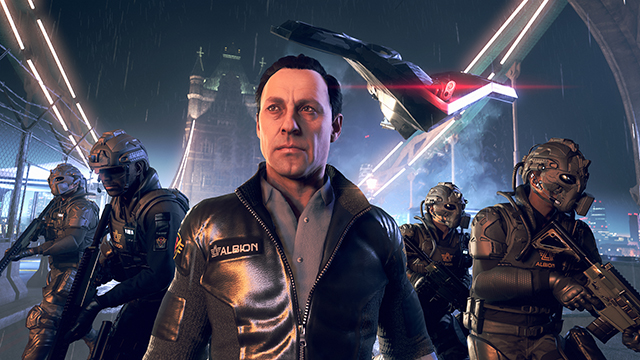
GR: Assassin’s Creed Origins and Odyssey had a scheduling system as well to make their worlds feel alive. This social sandbox seems like a big step up from that. Was that inspiring at all or was this just a coincidence?
JB: I think there’s an interest a lot of game developers have in rich simulation. Odyssey had really impressive scheduling and scripting like other games like The Sims and Red Dead. I came from Bethesda and we did a bunch of scheduling in those games as well. The thing that I think that sets Legion apart is the fact that we’re doing so many aspects of simulation like character motivations, behavior, and scheduling that you may have seen in other games but we’re doing them at the same time, which nobody has done.
And we’re doing all of them much deeper in terms of depth and realization. So we made all of these systems that could exist individually if we just wanted to make a background story generator. But we have this system that sits at the center of all of these that is able to play as a sort of communicator between them. So like there’s data associated with your outfit, background, animations that you might choose, and whenever we generate a character, this associated data puts together a person who feels pretty credible.
It’s like there’s a reason to where they are and reason they are doing what they are doing and wearing what they are wearing. There’s a reason of why they have relationships with people they have relationships with and the problems that they have and those problems are how you recruit them. Everything is connected.
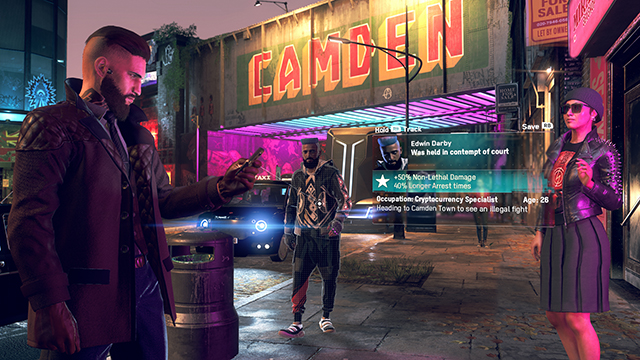
GR: So can you literally be a total stalker and follow any person through their whole schedule?
JB: Yes, basically once the player has paid attention [to someone]. The game is basically listening for several cues that the player has paid attention to a character. The most obvious one is profiling a character and saving them. It then generates more data. So initially, the world has a bunch of data associated with it based on the neighborhood, the demographics, the types of buildings. And just by walking around, all the characters that have spawned are using that data. They’re simple; it’s not a lot.
Then when you start paying attention to a character like with the profiler, the game will go “Oh shit. The player wants to know what their name is and what kind of job they have or what kind of animation set [they have].” It will they look at the character and think that they are wearing this [type of outfit] or moving this way, so they will probably have this [certain feature]. It then gives you a little more information.
And then if the player thinks that person is cool and saves them, the [social sandbox] system goes fully into effect and you get all of this information. So the player is able to basically browse the world and save characters and be like “Oh she was really cool and that was guy was getting harassed and fought back so he might be a good fighter and I’m gonna save him for later.”
Even when you go into a location where there are guards who are working for the bad guys who are trying to shoot you, if you take that guy out nonlethally, you can still profile him. He still has a life and people that he cares about. You can then gradually do things systematically to show him that Deadsec is not so bad and they’re helping people out. You can actually get bad guys to switch sides and join the resistance.
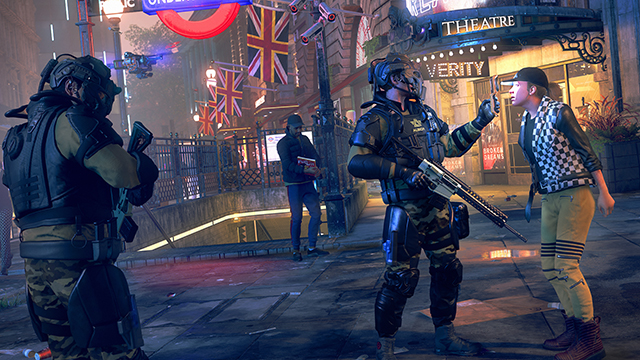
GR: So this is a semantic point but do we even call them NPCs at this point?
JB: [laughs] I mean, internally we call them different things. I’m fine with NPC because they are NPCs until the point that you make them otherwise, right?
GR: We should maybe call them “now playable characters.”
JB: [laughs] Yeah, yeah, that’s what we meant. [laughs] Was that not clear?
GR: One of the best parts of Watch Dogs 2 was playing nonlethally. About half the weapons are nonlethal this time. Why expand on that system this time around?
JB: There are some players like you and me that just like to play nonlethally for moral or challenge reasons. But in this game, you can play as anybody so that idea that this guy is my enemy right now but he’s maybe not beyond all redemption as a person. He’s here for certain reasons. It’s extremely cool that you can profile the guy, take him down with a shock, and be able to investigate what brought him to this lifestyle and possibly be able to change his mind. And the nonlethal options allow you to keep that in play where you’re not forced to kill every guard you see because that is all the game lets you do to express yourself.
GR: So why even have lethal options then?
JB: Well, I think it’s an expression thing. Some players are gonna want to be lethal. The game creates situations where it [might feel justified to some players]. Say one of your operators goes down. The game tells you who killed them. And then that character is actually added to your database and you can go follow up on that. So the player is able to take a look at the simulation and make up their own about whether they not to play lethally and who they want to use that power against. So it’s one of those things where the ability to choose makes that choice all the more powerful.




